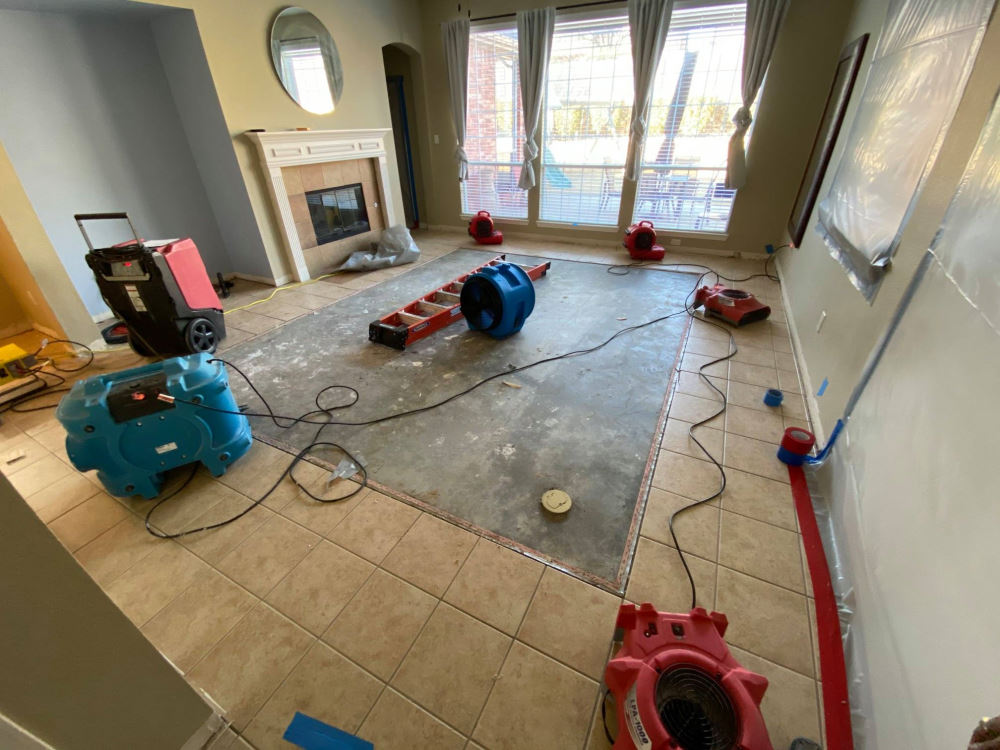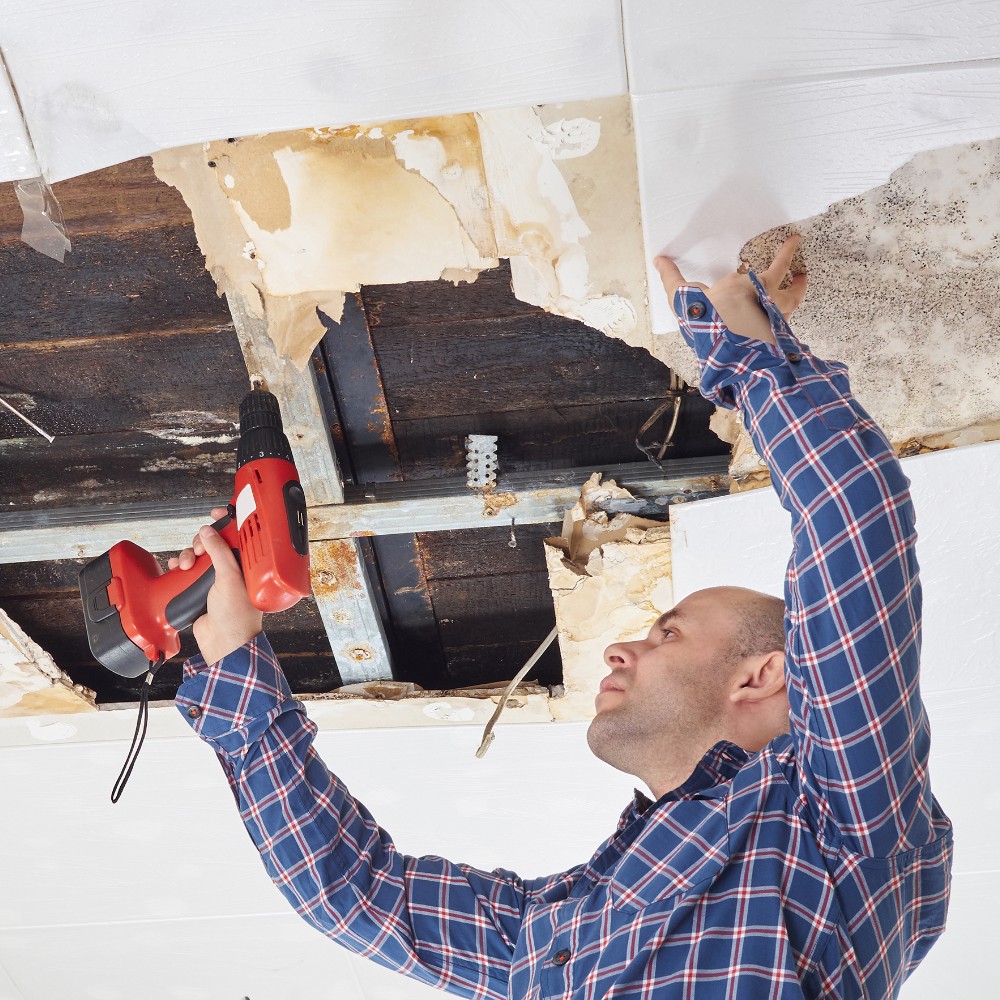Cost-Effective Damage Restoration Services to Handle Severe Water Issues
The Process of Water Damage Cleaning: Ensuring Your Home Is Restored Properly
Water damage can be a challenging challenge for home owners, requiring a structured and thorough clean-up process to recover safety and capability. A detailed assessment is important to identify the level of the damage and figure out the appropriate removal measures. Following this, efficient water removal methods play an essential duty in alleviating further damage. However, the subtleties of drying out, sanitizing, and eventual reconstruction are equally necessary and frequently ignored. Comprehending these phases can make a significant difference in the result of your home's repair, motivating a closer take a look at what each step involves.
Evaluating the Damage
Upon discovering water damage, the very first step is to extensively analyze the level of the influence. This first analysis is critical, as it aids establish the needed actions for efficient cleaning and reconstruction. Begin by evaluating the influenced locations, including walls, ceilings, floors, and individual valuables, to determine the source of the water intrusion, whether from flooding, leakages, or condensation.
Documenting the damages is vital for both insurance policy cases and preparing remediation initiatives - damage restoration services. Usage photos and written notes to record the extent of the damage, noting any kind of afflicted structural components and materials. Pay special focus to areas that might not be quickly noticeable, such as behind walls and under carpetings, as hidden moisture can cause further complications, consisting of mold development
In addition, evaluate the timeline of the water direct exposure. Ultimately, an extensive analysis lays the groundwork for a successful water damages cleanup process, making certain that all affected locations are resolved efficiently and completely.
Water Removal Techniques

Specialists generally use submersible pumps for larger volumes of water, which can rapidly ease flooding in cellars or various other influenced locations. For smaller sized amounts, wet/dry vacuum cleaners are usually made use of to remove recurring dampness from carpetings and tough surface areas. In addition, making use of mobile extractors permits targeted elimination in restricted areas or areas with delicate materials.
In instances of infected water, such as sewer or floodwater, progressed extraction methods may involve making use of biohazard tools to make certain safety and security and conformity with health and wellness policies. High-powered extraction tools are crucial in minimizing water retention in architectural products, which can cause mold growth and architectural damage otherwise dealt with quickly.
Ultimately, the performance of water extraction strategies plays a crucial duty in the overall success of the water damages cleaning procedure, preparing for succeeding remediation efforts.
Drying and Dehumidification
As soon as standing water has been effectively removed, the next crucial stage in the water damages cleanup procedure is drying and dehumidification. This action is vital to avoid more damage and mold and mildew growth, which can occur within 24 to 2 days in damp settings.
To accomplish reliable drying, customized devices such as industrial-grade air moving companies and dehumidifiers is utilized. Air moving companies distribute air throughout wet surface areas, enhancing dissipation rates, while dehumidifiers minimize humidity levels airborne, promoting a helpful atmosphere for drying out. The combination of these devices ensures that moisture is extracted from walls, home furnishings, and floorings, allowing them to completely dry thoroughly.
It is essential to monitor the drying out process very closely. Experts usually use dampness meters to evaluate the wetness material in various materials, guaranteeing that all affected locations reach appropriate dryness levels. This precise technique aids to prevent concealed dampness pockets that can lead to structural damage or undesirable mold development.

Cleansing and Sanitizing
After the drying out and dehumidification stage is full, the next important action in water damages cleanup is cleansing and sanitizing the impacted areas. This procedure is critical to avoid the growth of mold, germs, and various other pathogens that flourish in damp environments.
The cleansing stage typically entails getting rid of any kind of particles, dirt, and pollutants from surfaces making use of specialized cleansing agents. For hard surfaces, a mix of soap and water or industrial cleansing items is commonly utilized. Soft materials, such as furniture and rugs, might call for extra substantial cleansing approaches, including steam cleansing or deep extraction techniques, to make certain detailed cleanliness.

Disinfecting complies with cleansing, using EPA-approved anti-bacterials to get rid of harmful microbes. This step is necessary, especially in locations that may have come right into contact with floodwaters or sewer, as these resources can position significant health and wellness threats.
Furthermore, it is necessary to deal with any kind of remaining smells, which might require using smell neutralizers or advanced methods like ozone therapy. Proper cleansing and disinfecting not only bring back the safety and hygiene of your home however additionally lay the groundwork for successful repair and fixings in subsequent phases of the water damages cleaning process.
Remediation and Repair Services

As soon as the analysis is complete, remediation efforts can begin. This generally includes repairing or replacing broken products, making sure that all job follows local building codes and standards. If drywall has actually been endangered, it will need to be gotten rid of and changed with new material. In addition, floor covering may require comparable interest, depending on the degree of water direct exposure.
It is critical to involve skilled restoration experts during this procedure, as they possess the competence to deal with complex repair services efficiently. In addition, they can assist minimize potential future issues, such as mold and mildew growth or architectural instability, thus making sure a habitable and secure living environment. Eventually, effective reconstruction and fixings restore the home's integrity and enhance its total value.
Final Thought
To conclude, the index process of water damage cleaning is crucial for recovering a home to its pre-damage problem. Each phase, from examining the damages to implementing efficient water removal strategies, followed by extensive drying out, disinfecting, and necessary repair services, plays a crucial role in guaranteeing security and conformity with structure criteria. Effective execution of these steps not only reduces instant damages yet also improves the long-lasting stability and worth of the residential or commercial property.
Water damage can be a complicated difficulty for house owners, requiring a precise and structured clean-up process to restore safety water mitigation process and security and performance. Eventually, a comprehensive analysis lays the foundation for a successful water damage cleaning process, ensuring that all influenced locations are dealt with efficiently and extensively.
Efficient water extraction strategies are necessary in reducing damages and stopping additional complications adhering to a water invasion occasion.In final thought, the procedure of water damages clean-up is crucial for recovering a home to its pre-damage condition. Each phase, from examining the damage to carrying out effective water extraction techniques, complied with by detailed drying, disinfecting, and required repair services, plays a necessary function in guaranteeing safety and security and compliance with building requirements.